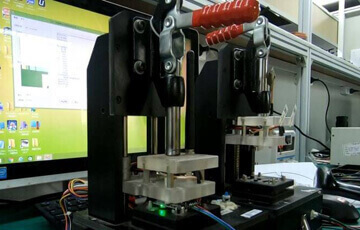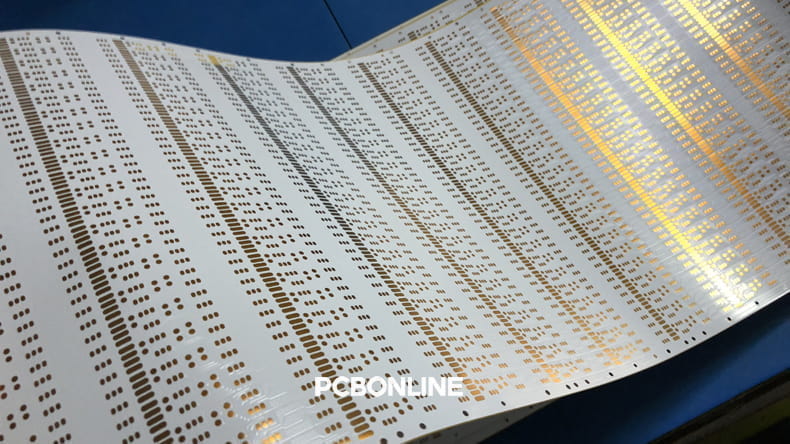
When you design an electronic system that comes with the demands of circuit connection in corners and narrow gaps, you may consider a flexible circuit board as a solution.
Using flexible circuit boards, numerous wiring harnesses save, and wiring space and circuit density increase while the product size shrinks.
What flexible PCB materials to choose for your application? What subordinates such as stiffeners can you add to the flexible circuit board? This article reveals everything about flexible circuit boards. Dive to see now!
Part 1: What is a Flexible Circuit Board
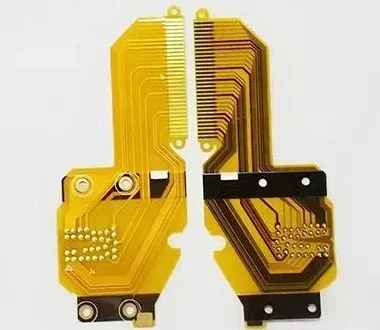
A flexible circuit board is a printed circuit made of polyimide (PI) or polyester (PET) films. It can bend and fold. It is light and small and is easy to install.
Flexible PCB conducts current and transmits signals.
A flexible circuit board has high reliability and excellent flexibility. By embedding the circuit design between flexible and thin plastic sheets, it stacks a large number of components in a small space to form a flexible circuit.
Flexible circuit board fabrication requires specialized production lines, as its VCP (vertical continuous plating) and etching are different from FR4 PCB fabrication.
Drilling on a flexible PCB can be mechanical or laser drilling.
The PCB pads made by mechanical drilling are in the shape of an oval. The pads of all flexible PCB LED strips are mechanically drilled.
Laser drilling creates square or rectangle-shaped pads. If you require that the pad shape on the flexible circuit board be the same as what you designed, you can require laser drilling.
The surface finish on flexible circuit boards is typically immersion gold (ENIG).
After PCB fabrication and mounting components, flexible circuit boards can be further assembled by attaching to or laminating with other parts of the system.

Regarding applications, flexible circuit boards are used in flexible LED strips, transparent glass screens, LED displays in smartphones and computers, interfaces, and camera, flash, and fingerprint modules.
Part 2: Flexible PCB Materials
A flexible circuit board is made of insulating films (PI or PET), conductors, and adhesives.
Flexible PCB materials can affect the flexibility, thickness, and other characteristics of flexible circuit boards.
Before having a flexible PCB designed and fabricated, it is necessary to choose the correct flexible PCB materials. Let's see the flexible PCB materials one by one.
Insulating materials - PI and PET
A flexible circuit board uses PI or PET as the insulating material.
PI or PET is the flexible circuit board material used for the substrate, insulating films, and coverlay.
PI
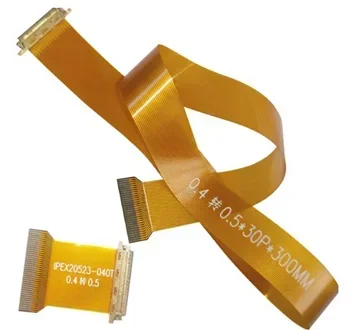
Polyimide film. It was invented by Dupont, and the brand name is Kapton.
PI flexible circuit boards are commonly used. They are yellow, white, or black.
PI has high and low-temperature resistance, electrical insulation, adhesion, radiation resistance, and medium resistance.
PI can be used in the temperature range of -269°C to 280°C for a long time and can withstand high temperatures of 400°C in a short time.
In a flexible circuit board, the thickness of a PI layer can be 12.5μm, 20μm, 25μm, and 50μm.
PET
Polyester film. It is transparent and is used as the substrate and insulating layers of transparent flexible PCB.

PCBONLINE, an experienced flexible circuit board manufacturer, doesn't advise designers to create coverlay on a PET flexible circuit board.
The reason is that the PET film is not resistant to high temperatures.
For the same reason, in PCB assembly for transparent flexible PCB, low-temperature reflow soldering is required.
At the PCB manufacturer PCBONLINE, the transparent flexible circuit board thickness range is 0.1mm to 0.6mm.
Conductors - RA copper, ED copper, and RTF copper
In a flexible circuit board, the copper for circuit layers can be RA, ED, or RTF copper.
The copper thickness of a flexible circuit board can be 12μm, 18μm, 25μm, and 35μm.
RA copper

Rolled annealed copper. RA copper is very resistant to bending. Flexible circuit boards using RA are used in applications with frequent tensile displacements.
In a flexible circuit board, RA copper must be used with adhesive to laminate with the insulating films.
ED copper

Electrolytic copper. ED copper is electrolytic plated on insulating films. It is not so resistant to bending.
Flexible circuit boards using ED copper are used in static applications.
ED copper doesn't need adhesive to laminate with insulating films.
Using ED copper, you can make the thickness of a flexible circuit board as small as possible.
At the flexible PCB manufacturer PCBONLINE, the minimum flexible circuit board thickness is 0.075mm.
Besides, if you need thick-copper flexible PCB (3oz), you must use ED copper.
RTF copper
Reverse-treated copper. It is used less than ED and RA copper in flexible circuit boards.
RTF copper is made from ED copper roughened on both sides.
Adhesive
The adhesive is modified epoxy. It is used to bond the RA copper and insulating films. But it increases the thickness of a flexible circuit board.
Flexible circuit boards without adhesive have a smaller thickness and better bending performance.
The width of the adhesive can be 250±20mm or 500±2mm.
The length of the adhesive can be 50±1m or 100±2m.
The brands of adhesive include:
Dupont, Rogers
Arisawa, TORAY, Shin-Etsu, KYOCERA
TaiFlex, Grace Electron, Microcosm, 4 Pillars, ThinFlex, Azotek
Shengyi, Jiujiang, Huahong
If you want to have flexible circuit boards fabricated from PCBONLINE, you can tell PCBONLINE what copper foil, insulating films, and adhesive you need, we can fabricate them to be the FCCL (flexible copper-clad laminates) and fabricate flexible circuit boards.
You can contact PCBONLINE by email at info@pcbonline.com. The flex PCB manufacturer will be glad to hear from you and provide every technical support, including advice on choosing appropriate flexible PCB materials and how many thicknesses of each layer to meet the application demands within your budget.
Part 3: Single-Layer, Two-Layer, & Multilayer Flexible Circuit Boards
From the above content, you've known that PI flexible circuit boards have coverlay while PET flexible circuit boards do not.
PI flexible circuit boards have 1 to 10 layers. In contrast, PET flexible circuit boards have 1 to 6 layers.
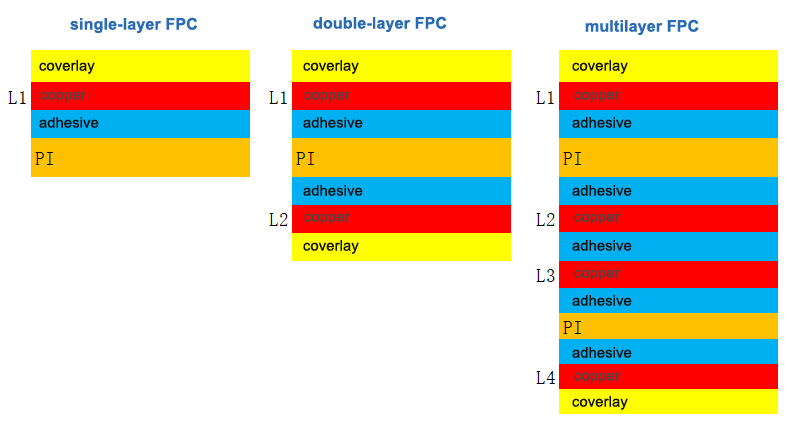
Check single-layer FPC, double-layer FPC, and multilayer FPC below.
Single-Layer Flexible PCB

Single-layer flexible circuit boards can be used for flexible LED strips.
Toll-to-toll is a popular fabrication method for single-layer flexible PCBs.
The maximum length of FCCL is 200m. That means the flexible LED strip can be 200m long.
Two-layered Flexible PCB
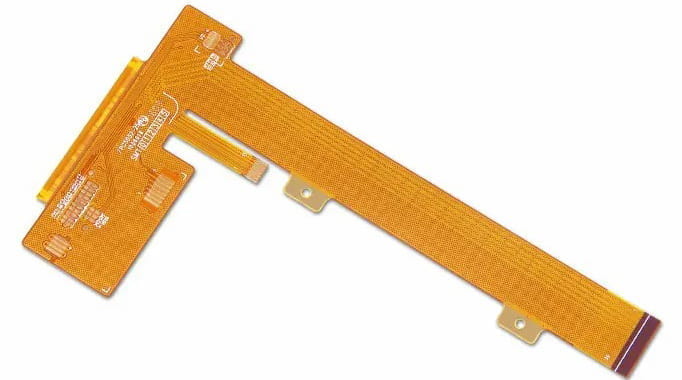
Two-layer flexible circuit boards are double-component-mounting-sided.
This is for structure balance.
Multilayer Flexible PCB
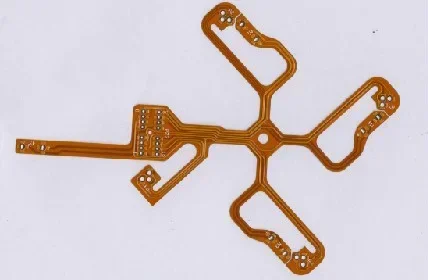
Multilayer flexible circuit boards are also double-component-mounting-sided.
Please note that multilayer flexible PCBs have two PI or PET substrates.
The fabrication of multilayer flexible PCBs involves adding adhesive between two flexible PCBs and laminating them.
Part 4: Flexible PCB Stiffener, Film, and Metal Dome
Many subordinates can add to flexible circuit boards. They can be PCB stiffeners, double-sided tapes, electromagnetic films, and metal domes.
Flexible PCB stiffeners
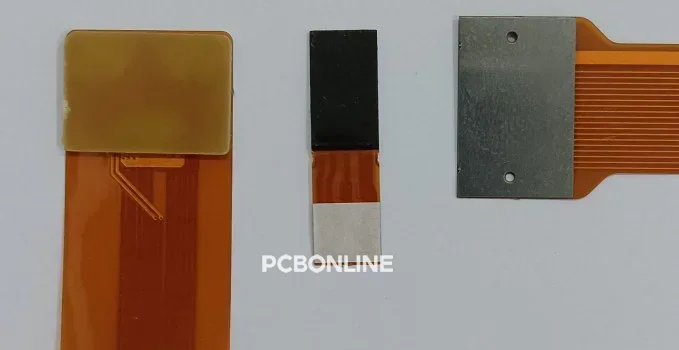
Stiffeners, including FR4, PI, and stainless steel, are laminated on the flexible circuit board to increase the PCB thickness.
Flex PCB stiffeners are used for component assembly or connection.
For example, in the below image, the pads in the areas adding PI and stainless steel stiffener are gold fingers.

FR4 stiffeners
FR4 stiffeners have the lowest costs.
They are made by laminating thermosetting adhesive onto the flexible circuit board.
There will be burrs on the FR4 edges during punching. A high dimensional accuracy is not expected for FR4 stiffeners.
However, FR4 stiffeners have good peel strength. Their thickness range is 0.10mm to 2.00mm.
PI stiffeners
PI is the most common flexible PCB stiffener.
PI stiffeners have good peel strength and precise dimensions. Their thickness range is 0.025mm to 0.20mm.
Stainless steel stiffeners
Stainless steel has good strength and is suitable for products with high-quality requirements.
The thickness range of stainless steel stiffeners is 0.15mm to 0.30mm.
Double-sided Tapes
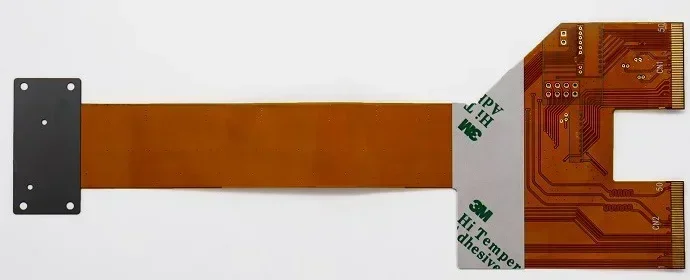
Double-sided tapes can attach to flexible circuit boards to provide high-strength bonds with tight and smooth surfaces.
The options for double-sided tapes include:
Tesa 4965 , Tesa 4972 , Tesa 68532 , Tesa 68732
3M966, 3M467MPF, 3M9888T, 3M9471, 3M9495, 3M9460
Please note that 3M tapes are resistant to high temperatures. They can attach to flexible PCBs before lead-free reflow soldering.
Electromagnetic Films

An electromagnetic film is laminated to the flexible circuit board to shield EMI (electromagnetic interface) from and to the environments.
When the signal lines are routed on the outermost layer of a flexible circuit board, it is necessary to add an electromagnetic film on the PCB to avoid signal distortion during the signal transmission process.
Metal Domes
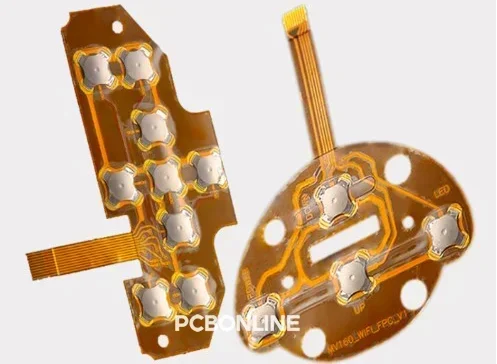
Metal domes have good conductivity. They can be added to flexible circuit boards for product switches and control by the operator.
Strength is a vital factor for metal domes. It means how many times the metal dome can be pressed without deformation.
The strength of metal domes can be 130gf, 160gf, 250gf, and 280gf.
The thickness range of metal domes is 0.05mm to 0.1mm.
Part 5: Flexible Circuit Board Manufacturer PCBONLINE
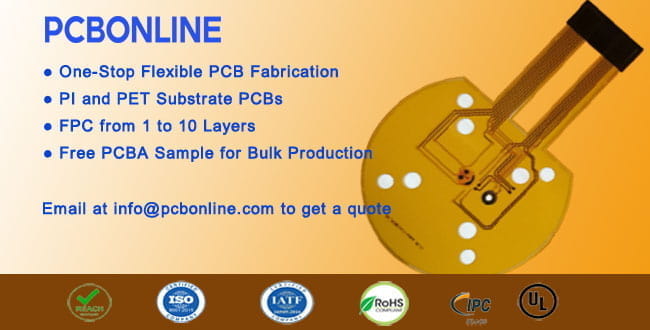
PCBONLINE is a one-stop flexible circuit board manufacturer, that provides custom flex PCB fabrication and assembly.
PCBONLINE has an FCCL laminate fabrication factory, a flexible PCB manufacturing base, and a PCB assembly factory for flexible circuit boards.
PCBONLINE is an EMS manufacturer of flexible circuit boards. We can bring your initial idea into reality with our R&D team and one-stop manufacturing capabilities.
PCBONLINE provides all types of flexible circuit boards, including 1 to 10-layer PI flex PCB, 1 to 6-layer transparent flex PCB, HDI flex PCB, and thick-copper flex PCB.
All the above-mentioned flexible PCB materials and subordinates are available for flexible circuit boards at PCBONLINE.
Most competitive prices of flexible circuit boards as PCBONLINE fabricates FCCL rather than buying laminates.
You can see the flexible PCB manufacturing process from PCBONLINE below.
PCBONLINE can help you choose the correct flexible PCB materials. It has rich experience in flexible circuit board manufacturing and assembly for many applications, such as flexible LED strips, transparent LED displays, LED lights, all kinds of modules, interfaces, CCS assemblies, etc. If you want flexible circuit boards, contact PCBONLINE by email at info@pcbonline.com.
Conclusion
Flexible circuit boards include PI and PET flexible PCB. PI is yellow. PET is transparent. Flexible circuit boards using RA copper are very resistant to bending. Flexible circuit boards using ED copper are adhesive-free and have a smaller thickness. Stiffeners, double-sided tapes, electromagnetic films, and metal domes can add to flexible circuit boards. PCBONLINE is a reliable manufacturer that not only fabricates FCCL but also flexes PCB and assembly at one stop. If you need high-quality and affordable flexible circuit boards, talk to PCBONLINE from the online chat window on the right.




